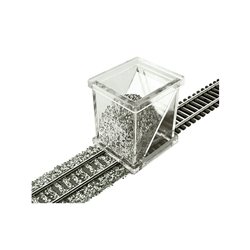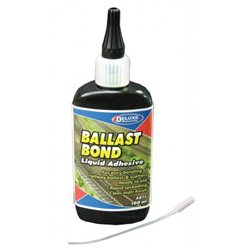Mainline Railways was a British model railway brand that operated between 1976 and 1983, introduced by Palitoy, the...
No products
Product successfully added to your shopping cart
There are 0 items in your cart. There is 1 item in your cart.
Search Tips
Open on Good Friday
The shop will be open on Friday 18th April.
Bring us some chocolate!
How does a ballast spreader work?
A ballast spreader is a plastic box about two inches square. On the base, there are two grooves that sit on the rails. Inside the spreader there is a slanted piece of plastic with three slots in the base, one in the centre and one either side and works like a silo hopper.
You place the spreader onto the tracks that you are going to ballast, then fill the spreader with ballast and slowly move the spreader along the track.
The ballast will fall through the three slots at the bottom adding ballast between the rails and either side of the track, giving you the perfect amount of ballast and minimal overspill, saving you time and effort in cleaning up excess ballast from your layout.
Once the ballast is down, simply glue into place, using a mixture of 50% PVA glue and 50% water and a couple of drops of washing up liquid to ease surface tension.
When applying the mixture use a syringe as this will give you better control as the mixture is dispersed.
When filling the syringe ensure that you give the mixture a good stir every time as the glue and water will separate if left for any length of time.
An easier approach to the PVA mix is to use ready to use ballast glue.
Click here to receive the tips weekly in your mailbox. You can unsubscribe at any time.










